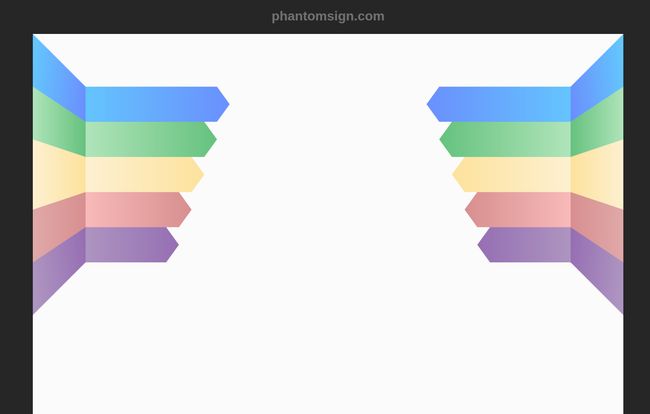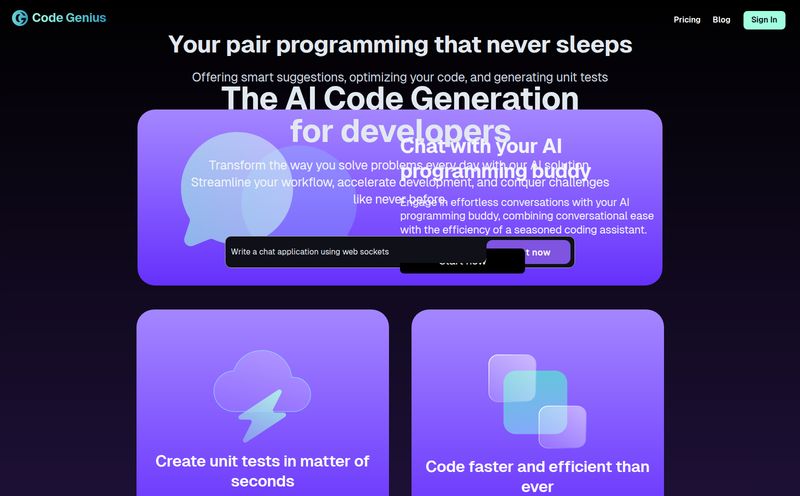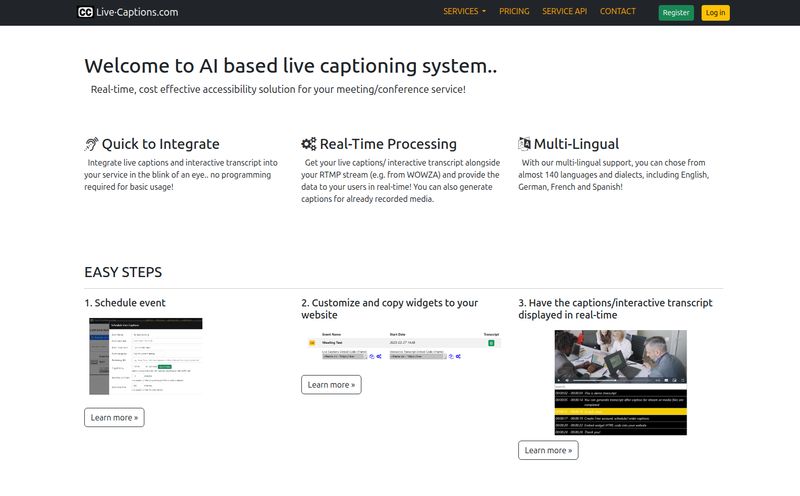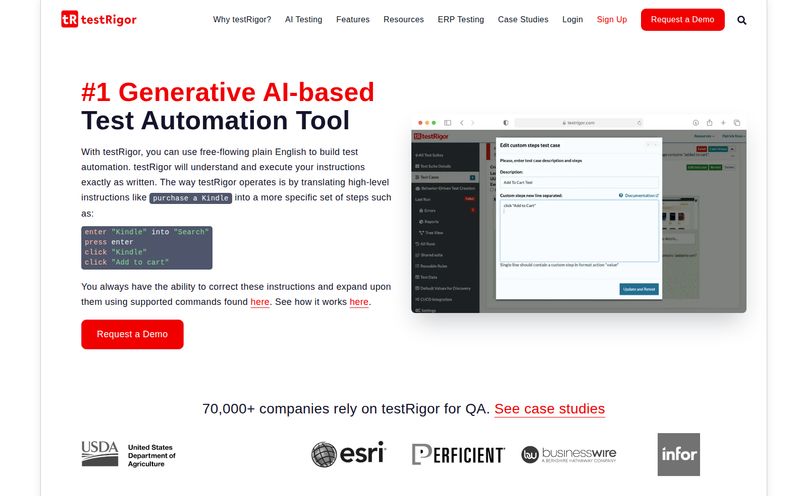How many of you have a secondary email address? You know the one. The digital dumping ground you use to sign up for that “free” PDF, the 10% off coupon, or to get past a paywall, just to protect your real inbox from the inevitable deluge of marketing emails. My own junk mail account is a wasteland of forgotten passwords and newsletters I never asked for. It’s a necessary evil in our line of work, right?
Every now and then, a tool comes along that promises a better way. This week, I stumbled upon a concept called PhantomSign. The name alone caught my eye. It sounds like something out of a spy movie. The promise? An AI-powered throwaway email service designed to make those pesky signups and verifications quicker and completely spam-free. It sounds almost too good to be true. And, as we'll see, there's a bit of a mystery surrounding it, which, of course, just makes me more interested.

Visit PhantomSign
So, What Exactly is PhantomSign?
At its core, PhantomSign is a disposable email service. If you’ve ever used a tool like Temp-Mail or 10 Minute Mail, you're already familiar with the basic idea. You visit the site, it generates a random, temporary email address for you, and you use that address to sign up for whatever you need. The verification email arrives in the temporary inbox on their site, you click the link, and then you can forget that email address ever existed. Your primary inbox remains pristine, a peaceful sanctuary untouched by aggressive marketing funnels.
These services are lifesavers for us SEO and marketing folks. We're constantly signing up to analyze competitor websites, check out new tools, or download industry reports. Using a temporary email is just standard operating procedure. But PhantomSign claims to add a clever new layer to this process.
The AI Magic Trick: How It’s Supposed to Work
Here’s where it gets interesting. PhantomSign isn't just a passive inbox. It supposedly uses AI to actively scan incoming emails and automatically pull out the most important bits: the verification code or the confirmation link.
Think about that for a second. Instead of opening the temporary email, finding the right line of text, and copying the code or clicking the link, the AI does it for you. It's like having a tiny, hyper-focused robot assistant whose only job is to get you signed in as fast as humanly—or rather, artificially—possible. This removes a few clicks and a bit of mental energy from the process. It’s a small tweak, but in a world where we're all trying to optimize our workflows down to the second, those seconds add up.
I’ve always felt that the best tech is the kind that just gets out of your way. This AI feature, if it works as advertised, is a perfect example of that philosophy. It smooths out a tiny, but common, point of friction in our digital lives.
The Good Side of Going Ghost
Let's break down the potential benefits here, because the concept is really solid. First and foremost is the obvious spam protection. This is the whole reason these services exist. By using a PhantomSign address, you're essentially putting up a ghost shield around your real identity. Sign up, get what you need, and vanish. No follow-up emails, no “we miss you” campaigns, nothing.
Then there's the speed and convenience I mentioned. The AI-powered extraction is the headline feature. For anyone who has to do this multiple times a day—think QA testers running through a signup flow—this could be a genuine time-saver. Add to that a developer-friendly API, and you've got a seriously powerful tool. The API allows for programmatic creation of temporary emails, which is huge for automated testing environments. You could write scripts that create a new user, verify the email, and test a feature, all without manual intervention.
Potential Hauntings: The Downsides to Consider
Of course, no tool is perfect, and this ghost has a few potential chains rattling around. The biggest one I saw is that the email addresses are reportedly only valid for five minutes. Five! That's shorter than the time it takes my coffee to brew. This makes the service incredibly ephemeral, which is the point, but it also creates a sense of urgency. If the service you're signing up for has a slow mail server, you might be out of luck. You gotta be quick on the draw.
Another concern is the reliance on the AI. What happens when it fails? We've all seen AI misinterpret things. If it can't find the link or pulls the wrong set of numbers from an email, you're back to doing it manually. It's not a deal-breaker, but it does mean you can't blindly trust it every single time. And for the power users, there are mentions of rate limits on the API, which could be a bottleneck for large-scale automated processes. Its something to keep in mind.
Who Would Use a Ghostly Email Service Anyway?
I can see a few distinct groups getting a lot of milage out of a tool like this.
For the Everyday User
This is for anyone tired of their inbox being a warzone. Use it for one-off downloads, entering competitions you probably won't win, or getting trial access to a service you’re just curious about. It’s digital hygiene, plain and simple.
For the Developers and QA Testers
This is the power audience. The API is the game-changer here. The ability to spin up and verify hundreds of test accounts without a real email server is invaluable for regression testing and building robust applications. I've worked on projects where this alone would have saved the dev team hours every week.
For the Marketers and SEOs
Hello, that's us! Secretly shopping a competitor's checkout flow? Analyzing their onboarding email sequence? Grabbing a lead magnet to see what the fuss is about? A temporary email is your best friend. The AI component just makes the whole process a little bit slicker.
A Ghost in the Machine? The Curious Case of Phantomsign.com
Okay, so here's the twist. After getting all excited about this concept, I went to check it out. And what did I find at `phantomsign.com`? A parked domain page. Yep. Just a simple landing page saying the domain is parked by Sedo and will be available soon.
So, what gives? This adds a layer of mystery. Is PhantomSign a brand-new project that's still in stealth mode? Is it a side project someone floated and then abandoned? Or is the information I found from a beta that has since been taken offline for a rework? It’s a bit of a letdown, but also… kinda intriguing. It feels like finding a map to a hidden treasure, but the treasure chest isn't there yet. It makes me want to keep an eye on it, to see if and when it materializes.
The Million-Dollar Question: What's the Price?
With the service not even live, pricing is obviously a complete unknown. Most disposable email services operate on a freemium model. They offer basic functionality for free (often supported by ads) and then have paid tiers for things like custom domains, more storage, or higher API limits. I would expect PhantomSign to follow a similar path, perhaps making the AI feature a part of a premium plan to cover the processing costs. But for now, your guess is as good as mine.
My Final Thoughts on This Digital Apparition
I have to say, I'm genuinely taken with the idea of PhantomSign. It takes a proven, useful concept—the throwaway email—and adds a smart, modern twist with AI. It’s a small innovation, but it’s a thoughtful one that targets a real-world annoyance. The potential for developers and marketers is especially clear.
The fact that the site is currently a parked domain is a bit of a wet blanket, but it doesn’t kill my enthusiasm for the concept. If anything, it makes me more curious. I’ll be bookmarking the page and keeping my ear to the ground. If PhantomSign does materialize from the digital ether, it could very well become a go-to tool in my SEO toolkit. For now, it remains an exciting, and slightly spooky, ghost in the machine.
Frequently Asked Questions about PhantomSign
What is PhantomSign?
PhantomSign is a conceptual tool for a throwaway or disposable email service. Its unique feature is the use of AI to automatically find and extract verification codes and links from incoming emails, speeding up the signup process.
How is PhantomSign different from other temporary email services?
The main differentiator is its AI-powered extraction feature. While other services provide a temporary inbox, PhantomSign aims to automate the step of finding and using the verification information within the email, making it faster and more convenient.
Is PhantomSign free to use?
The pricing for PhantomSign is currently unknown, as the website is not yet live. Many similar services offer a free tier, so it's possible PhantomSign will as well, perhaps with premium features available for a fee.
How long does a PhantomSign email address last?
Based on the available information, the temporary email addresses are designed to be extremely short-lived, lasting for only about five minutes.
Can I use PhantomSign for my business?
Absolutely. Developers and QA testers could use the API for automated testing. Marketers and SEO professionals can use it to research competitors or sign up for services without exposing their primary business email to spam.
Is PhantomSign available to use now?
As of this writing, the official website, phantomsign.com, is a parked domain, indicating the service is not yet publicly available. It could be in development or a concept that is yet to launch.
Reference and Sources
- Domain Status: Information on the current status of the domain was observed directly at phantomsign.com, which is currently a parked page managed by Sedo.
- Online Privacy: For more on why protecting your primary email is so important, the Electronic Frontier Foundation (EFF) is a fantastic resource for digital privacy rights and best practices.



